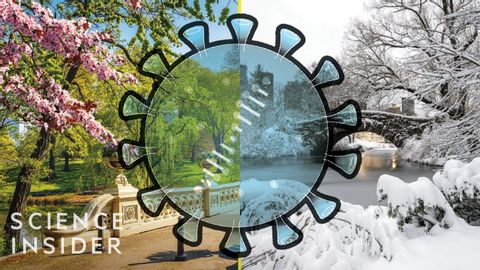天氣變暖會不會讓COVID-19停止? (Will Warm Weather Stop COVID-19?)
 沒有此條件下的單字
沒有此條件下的單字US /səˈsɛptəbəl/
・
UK /səˈseptəbl/
- adj.易感;易受影響的;易得病的;易受影響的;脆弱的
US /ɪˈmjoon/
・
UK /ɪˈmju:n/
US /pænˈdɛmɪk/
・
UK /pæn'demɪk/
- adj.(疾病)大規模流行的,廣泛蔓延的
- n.大流行病
US /ˌɛpɪˈdɛmɪk/
・
UK /ˌepɪ'demɪk/
- adj.傳染性的;流行病的
- n. (c./u.)疫情
